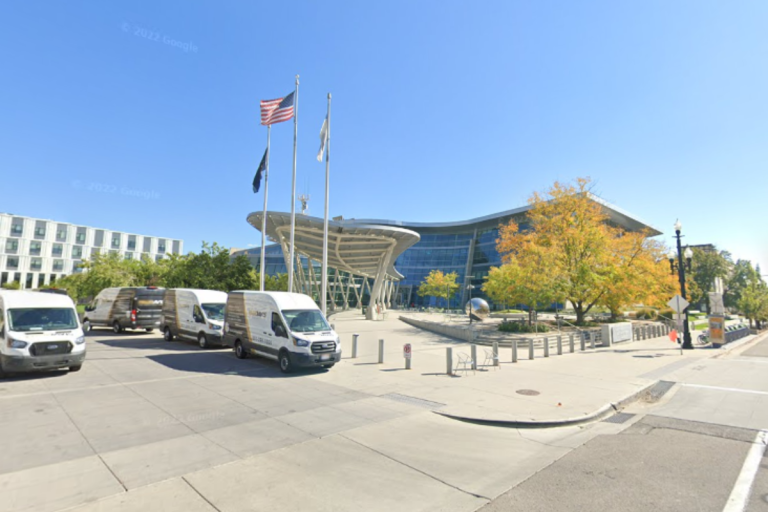DENVER (KDVR) — Propping windshield wipers up before a snowstorm is a common routine for many car owners, but according to AAA, it’s not always the best practice.
There are several ways people can prepare their cars for a storm, like filling up their gas tank, checking tire pressure, or putting an emergency bag in the car. One of these tips includes putting up windshield wipers before a snowstorm so it’s easier to clear off in the morning and the wipers don’t stick to the windshield.
Why Do People Put Their Wipers Up?
The logic behind propping up windshield wipers before a snowstorm is simple: it prevents the rubber blades from freezing to the glass, which could otherwise make them ineffective or even damage them when trying to remove ice. In extreme cold, moisture between the wiper and the windshield can turn into a layer of ice, making it difficult to lift them when needed. This is why many drivers adopt this habit as a preventive measure.
However, while pushing up windshield wipers before a storm isn’t necessarily a bad practice, Skyler McKinley with AAA said it shouldn’t be used during every snowstorm.
When Should You Leave Your Windshield Wipers Up?
McKinley said that as a born-and-raised Coloradan, he’s in the habit of leaving his wipers up ahead of snow, ice, and other winter weather conditions, especially since it keeps them from freezing to the windshield, which can cause damage over time and speeds up the scraping and defrosting process.
However, he said there are risks to this approach.
McKinley warned that leaving the wipers up for every storm, or for a prolonged period, can do more harm than good. Prolonged exposure can damage or stress the wiper springs over time, reducing their effectiveness. The wiper arms are designed to lay flat against the windshield, and constantly lifting them away from this position can lead to a weakening of their structure.
“I also won’t leave them up if I know there’s severe wind incoming as part of the wintry mix since wind can bend the wiper arm, strain the springs, or slam the whole assembly into the glass with force,” said McKinley.
While it’s not the best practice to constantly leave the wipers up, McKinley said he’ll still leave his wipers up ahead of many storms and hasn’t had many issues. However, AAA’s official suggestion is to leave the blades down and put a blanket or snow cover over the windshield ahead of a storm to avoid any of the risks.
Potential Risks of Leaving Wipers Up
- Spring Tension Loss: Over time, keeping the wipers in a raised position can weaken the tension in the springs that press them against the windshield, reducing their effectiveness in clearing rain and snow.
- Damage from Wind: In high winds, raised wipers can be bent or even snapped back against the windshield with significant force, potentially cracking the glass.
- Potential Theft or Vandalism: While uncommon, exposed wipers could be more susceptible to being tampered with or stolen.
- Accidental Damage: If a person accidentally brushes against raised wipers, they could bend the wiper arms or damage the attachment points.
Alternative Methods to Prevent Wipers from Freezing
Instead of raising windshield wipers, here are some safer alternatives to prevent them from freezing:
- Use a Windshield Cover: A properly fitted windshield cover protects both the glass and the wipers from ice and snow buildup.
- Place a Towel or Blanket Over the Windshield: This works similarly to a windshield cover and prevents direct contact between the wipers and ice.
- Apply Rubbing Alcohol or a De-Icer Spray: Spraying rubbing alcohol or a commercial de-icer on the windshield can prevent ice from bonding with the wipers and glass.
- Use Winter Wiper Blades: Designed specifically for snowy and icy conditions, winter wiper blades are more resistant to freezing and may not need to be lifted in advance.
- Park Facing East: This allows the morning sun to naturally defrost the windshield and wipers, reducing the chance of freezing.
The Science Behind Freezing Wipers
When moisture in the air condenses on a cold windshield, it can freeze the rubber wiper blades to the glass. This can cause the rubber to tear when you try to lift them in the morning. The cold can also make the rubber brittle, shortening the lifespan of the blades.
Modern cars are designed with defrosters that specifically heat up the windshield near the base of the wipers, preventing them from sticking. If your car has this feature, raising the wipers becomes even less necessary.
Expert Opinions and Studies
Several studies have been conducted on the durability of windshield wiper components in extreme weather. According to a 2022 study by the Society of Automotive Engineers (SAE), wiper arms that were frequently lifted in cold temperatures showed a 12% reduction in spring tension after just one winter season. Over time, this led to decreased effectiveness in wiping performance, requiring earlier replacement of both the wipers and the arms.
The National Highway Traffic Safety Administration (NHTSA) also recommends regular inspection of wiper blades, as exposure to extreme weather conditions—whether through ice, wind, or heat—can cause rapid degradation.
Common Misconceptions About Winter Car Care
Many winter car care tips have been passed down through generations, but not all of them are effective. Here are a few outdated tips that experts say you should rethink:
- Myth: Letting your car idle for 10+ minutes before driving in cold weather improves performance.
- Reality: Modern engines only need 30 seconds to warm up before driving, even in cold temperatures.
- Myth: Pouring hot water on a frozen windshield is a safe and effective way to defrost it.
- Reality: The sudden temperature change can cause the glass to crack.
- Myth: You should underinflate your tires in winter for better traction.
- Reality: Properly inflated tires provide the best grip. Underinflated tires can cause uneven wear and reduced handling.
Final Recommendations
While raising your windshield wipers before a snowstorm may seem like a helpful habit, experts recommend using other protective methods instead. Leaving wipers up for prolonged periods can weaken their springs, make them vulnerable to wind damage, and potentially cause unintended harm to your car. Instead, using a windshield cover, treating your windshield with de-icer, or investing in winter-specific wiper blades are better solutions.
Ultimately, vehicle owners should evaluate the specific conditions of each snowstorm and take appropriate measures to protect their cars. A combination of preventive care and safe driving habits will ensure better performance and longevity of your vehicle’s components throughout the winter season.
Disclaimer – Our editorial team has thoroughly fact-checked this article to ensure its accuracy and eliminate any potential misinformation. We are dedicated to upholding the highest standards of integrity in our content.

























+ There are no comments
Add yours